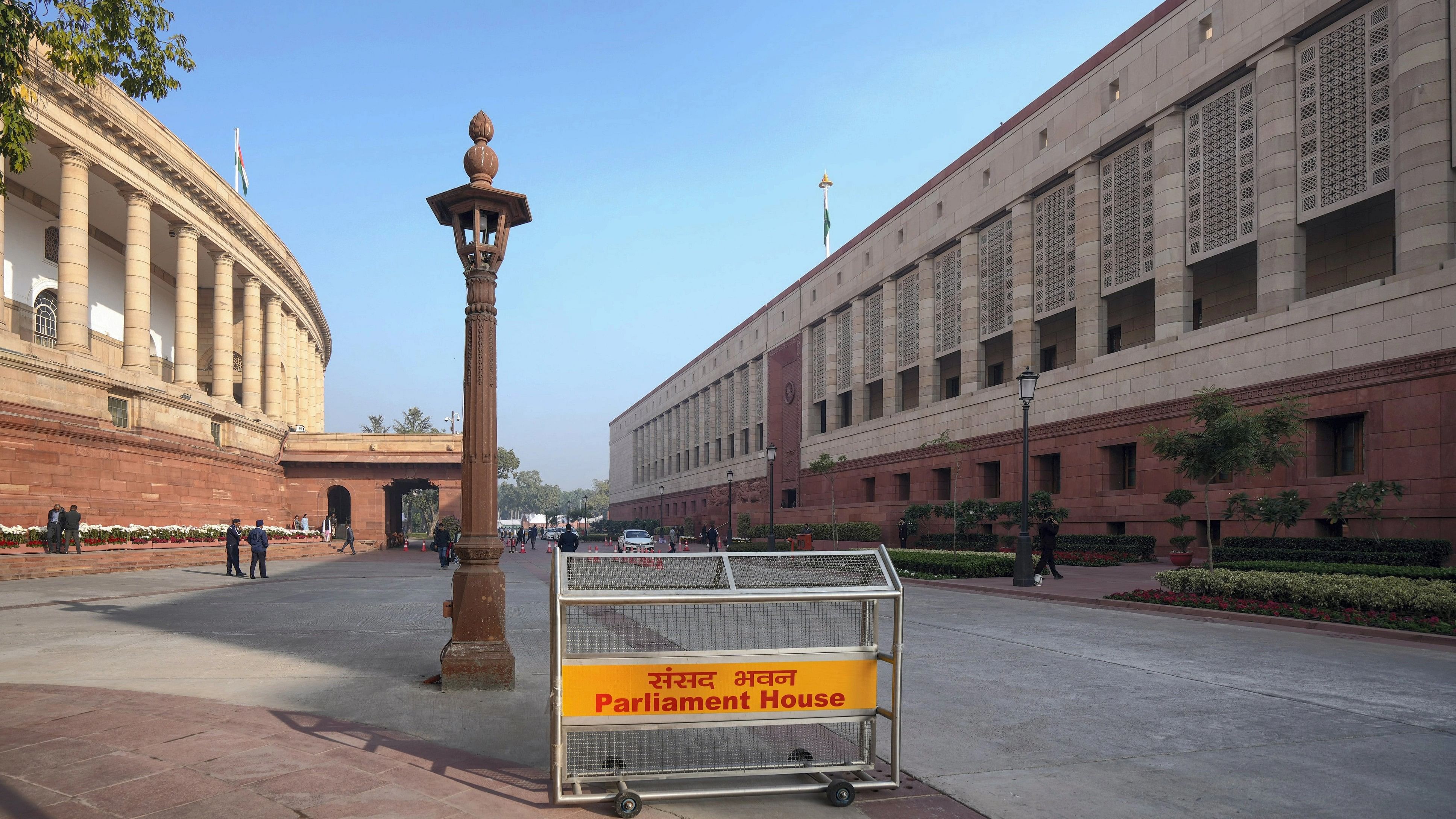
Parliament House complex wears a deserted look after a security breach on the anniversary of the 2001 Parliament terror attack, during the Winter session, in New Delhi, Thursday, Dec. 14, 2023.
Credit: Reuters Photo
The new Parliament building witnessed a major security breach on Wednesday amid the ongoing Winter Session. Police have found out that the intrusion, played out by desperate and unemployed protestors, was well planned in advance allegedly by six people, five of whom have been nabbed. The incident has raised legible security concerns, leaving people wondering how the trespassers succeeded in jumping into the Lower House.
Here, we take a look at the factors that may have helped the two men dodge security and enter the Lower House.
Fewer security staff
According to a report by The Indian Express, the security wing of the Delhi Police recently held a meeting to assess and enhance security measures in and around Parliament. This meeting took place in response to a threat made by pro-Khalistan leader Gurpatwant Singh Pannun, who claimed that an attack on Parliament may occur on or before December 13.
While a senior police officer confirmed to IE the meeting and discussions to increase deployment, they clarified that it was not directly related to Pannun's threat. In the past month, the Delhi Police has already increased deployment from 250 to 300 personnel.
However, yesterday, on the 22nd anniversary of the 2001 Parliament attack, only 176 security officers were reportedly present, despite the usual deployment of 300.
Security infrastructure still ‘under progress’
Ever since the proceedings of both Houses of Parliament were shifted to the new building in August, there have been ongoing efforts to make minor adjustments to the building and complete the exterior facilities, and the security apparatus in the complex seems to be in a relatively incomplete state.
According to another report by The Indian Express, just a day before the security breach in the Lok Sabha, the Central Public Works Department (CPWD) issued a tender for additional security infrastructure for the Parliament complex. This includes gadgets and bulletproof barriers.
The CPWD, which is responsible for the construction and maintenance of the complex, invited pre-qualification bids for the redevelopment of the reception lounge, security blocks, electrical and mechanical services, security gadgets, bullet-proof barriers, and external development such as sewerage and drainage, the publication said.
The estimated cost of the project, titled 'Redevelopment of reception lounge and other security infrastructure in Parliament Complex', is Rs 35 crore, and it is expected to be completed within five months, as stated in the CPWD tender document.
Gallery height
Police have indicated that the gallery from which the intruders entered the Lok Sabha chamber is approximately 11 feet tall. This height is lower than the galleries in the heritage Parliament building, also known as Samvidhan Sadan since August.
Officers told IE that this reduced height facilitated the intruders' ability to jump into the chamber. One such officer told the publication that there is no substantial barrier or wall in place to prevent such incidents. The galleries in the new building are designed to accommodate more visitors and are less steep compared to those in the old building.
Shoes not checked
Sources also told IE that facial recognition cameras are being used at the entry gates for Members of Parliament (MPs) and staff. On the other hand, visitors, including the attackers on Wednesday, are provided with printed passes that are scanned at the gates.
An officer also told the publication about the difficulty in verifying the passes and identification of each individual, including students and people arriving in buses. Additionally, it was revealed that the two attackers concealed color smoke canisters inside their shoes, which are not typically checked.
While scanners, metal detectors, and frisking are conducted at all points, checking shoes is not a common practice. The smoke bombs, seemingly made of plastic, were not detected by the machines. The fact that the two men were recommended by an MP also aided their passage through the layers of security.
Security Changes post breach
Following the incident, security protocols have been extensively revised. This includes the implementation of separate entrances for Members of Parliament, staff members, and the press.
When visitors are permitted to enter again, they will be directed through a fourth gate, while the issuance of visitor passes has been temporarily suspended. Furthermore, to prevent unauthorized access to the Lok Sabha chamber, the visitors' gallery will now be enclosed with glass barriers. Additionally, body scan machines, similar to those found in airports, will be installed within the Parliament premises to enhance security measures.